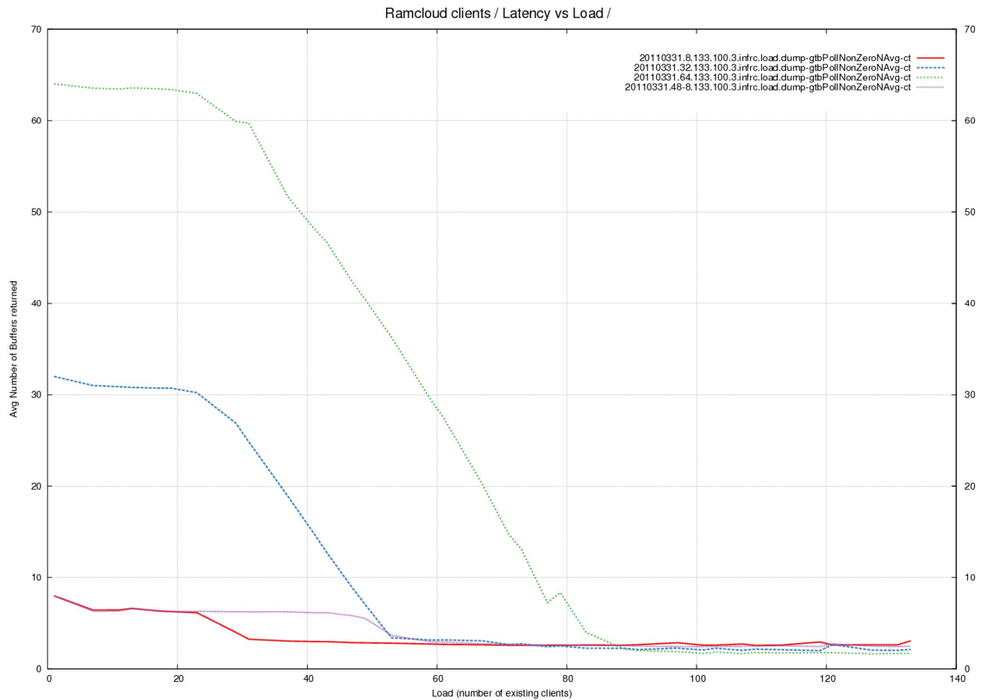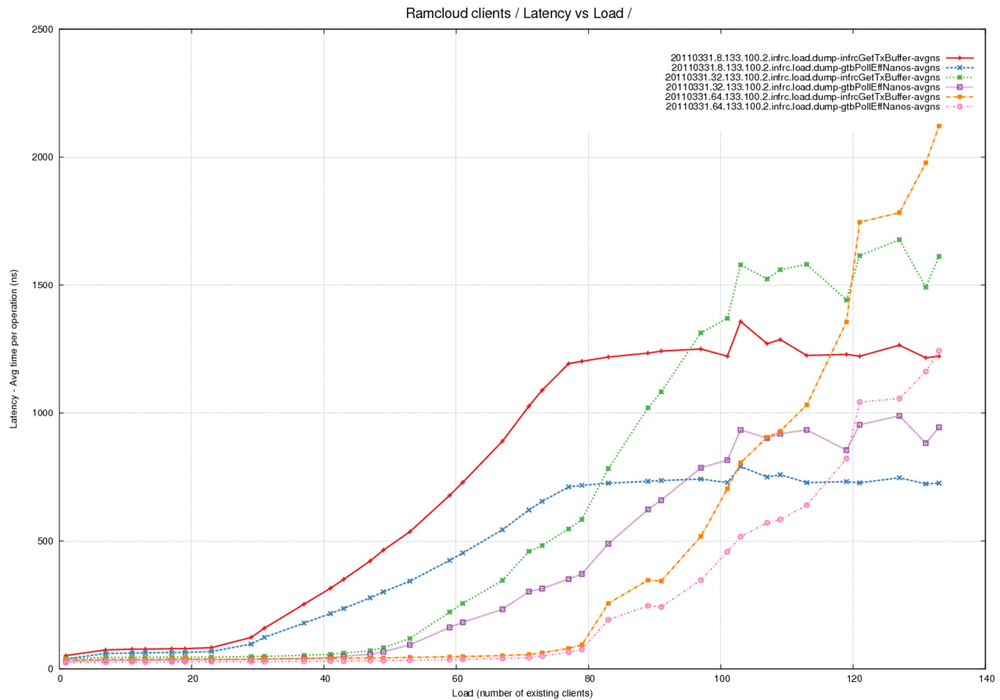...
Latency Graph - Average number of buffers returned by pollCompletionQueue across different Buffer Pool sizes
Analysis
- Summary - 3 empty buffers become available at a time under load.
Number of receive buffers also affects pollCompletionQueue(). - This average does not include calls when no buffers were returned.
This is an average when non-zero buffers were returned by pollCompletionQueue(). - The red, blue and green lines were measured with 24 RX buffers and
8, 32 and 64 TX buffers respectively. - The violet line was measured with 48 RX buffers and 8 TX buffers.
- An interesting trend that appears to be independent of number of
buffers in the pool. There is a drop in the average at the same load
irrespective of buffer-pool. - Why does doubling the number of receive buffers affect the number of
empty transmit buffers returned ? Compare Red against Violet. - Look at the average number of buffers returned under high load.
It appears as if this number is around 3. We expect this number to be
1 buffer returned under load where empty buffers are returned as soon
as they are available. The higher number indicates that maybe buffers
are being returned in sets of 3. What is the reason for this behavior ?
Latency Graph - Time spent in pollCompletionQueue per read (average) across different Transmit Buffer Pool sizes
Analysis
- Summary - pollCompletionQueue() (and hence getTransmitBuffer()) take
longer to run with increasing load. Note that pollCompletionQueue()
would be called multiple times until a succesful return - an empty
buffer from the pool. - Red/Blue lines represent 24 RX buffers and 8 TX buffers
- Green/Violet lines represent 24 RX buffers and 32 TX buffers
- Orange/Pink lines represent 24 RX buffers and 64 TX buffers
- This a plot of measurements of time taken by the different functions
during the experiments. - Total time spent in pollCompletionQueue was tracked and then divided by the
number of read calls to calculate the average. - This tracks the curve of time spent within the getTransmitBuffer
call well. The difference between the two needs to be explained.
...

